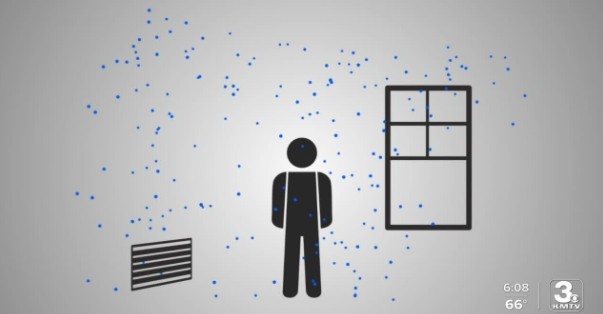“Really moving away from surfaces as being a primary mode of transmission and more to air-based transmission,” infectious disease expert and co-director of the Global Center for Health Security at the University of Nebraska Medical Center Dr. John Lowe said.
Feverishly disinfecting everything around you isn’t as critical as once thought.
“This shift in guidance really moves us away from the need and burden to do robust cleaning at all times to where we’re doing targeting cleaning once a day, similar to what we were doing in normal times,” Dr. Lowe added.
What’s more important now is proper ventilation. The WHO found that airborne transmission mostly takes place in close proximity of one meter or almost three and a half feet. However, longer-range transmission is possible, and in fact likely, in poorly ventilated places.
Proper ventilation means filtering out any potential virus so it doesn’t build up. Cracking a window and introducing fresh outside air also helps.
“If you can also move a group meeting or a group of people that are gathering outdoors, the risk that’s associated with that group of people being together outdoors is a fraction of what it would be indoors,” Dr. Lowe said.
The new workplace environment has changed to reflect some of Dr. Lowe’s tips. Local planning and design company RDG has noticed the change of workspace design when working with clients. Outside workspaces and advanced filtration systems are increasing in demand.
“The first question clients are asking us is, ‘Are we up to code in terms of the number of air changes per hour? How much fresh air are we breathing?'” President of RDG John Sova said.
Dr. Lowe applauds schools, who have welcomed outside class time and installed advanced filtration systems last fall, minimizing spread indoors.



